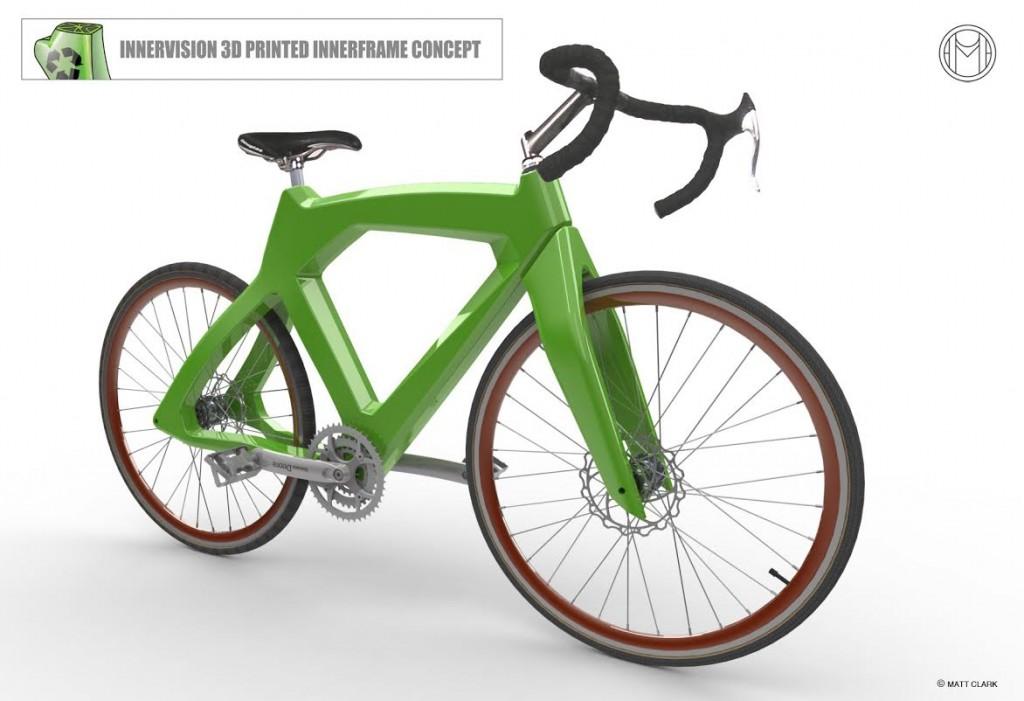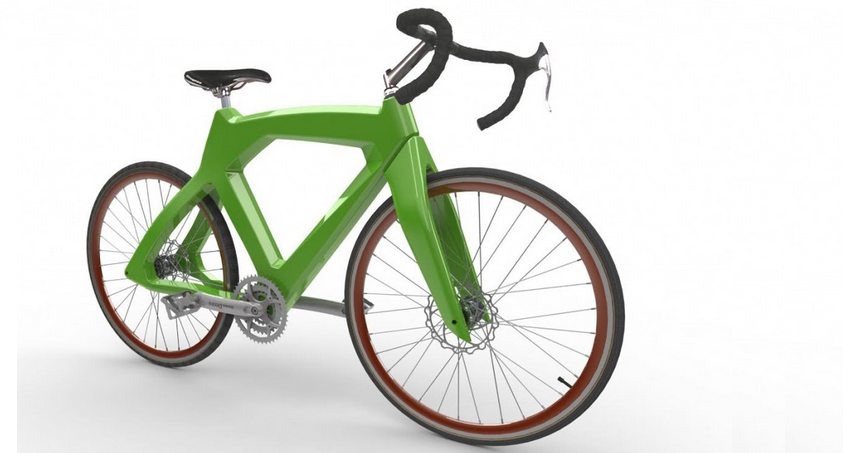
When it comes to cycling, there are two ends of the spectrum; those like me who do it from time to time on an amateur level, and then there are those who take it extremely seriously. The latter are usually individuals who spend thousands upon thousands of dollars for the highest quality bikes, equipment, and gear. Every ounce a bike weighs is one more ounce that needs to be pushed along by the mechanics of the pedal system. This is why we see bicycle companies trying everything they can to increase strength while decreasing weight. At the same time, strength is important, as is the design of the bike’s frame. A design that lacks aerodynamics could be even more of a problem for a cyclist than the bike that weighs too much.
“The concept of the bike is to streamline bicycle production using methods and materials that can effectively lower costs and improve quality,” Clark tells 3DPrint.com. “The Innerframe design allows for lightweight construction that’s extremely rigid and conducive to 3D printing. Each bike will be printed vertically in order to produce the Innerframe and outer surface simultaneously. Of course this process will provide accuracy far beyond current methods. Also, the frames will not require paint, welding or heat treatment like traditional aluminum bikes.”
This isn’t a fly-by-night project for Clark. In fact, he has been refining his unique method of fabrication for these bike frames since 2008, and he now feels as though 3D printing is at a point where fabrication of his frames can be greatly enhanced.
Clark believes that 3D printin
“I’ve consulted with 3D Systems who stated that they have the machines and capabilities to print it,” Clark tells us. “Currently, most 3D printed objects are solid-form, while [my] method utilizes the technology to create a custom, structurally optimized core to provide strength and light weight. Obviously, this method has potential to extend beyond bicycle manufacturing.”
Clark believes that companies like Local Motors could greatly benefit from utilizing the Innerframe design in their 3D printed cars, rather than using the more conventional method of “solid-form” 3D printing.
The Innerframe design is best described as featuring an innovative internal spaceframe-like structure that includes triangulation and molded beams which act to increase its strength, while at the same time strategically distributing weight. Using SolidWorks, Clark optimizes the Innerframe in the same way that many 3D printed interiors of objects are optimized. This optimization will allow the Innerframe to vary in thickness throughout the structure, allowing Clark to custom tailor its strength and weight.
“To date, the closest method used within the bicycle industry is foam filling a carbon fiber frame,” said Clark. “Obviously, that method/combination isn’t optimal.”
At this point, due to high machine costs, 3D printing an adult-sized frame will only be accomplished by a devoted 3D printing manufacturer. However, as machine costs decrease, I believe consumers will eventually have the ability to purchase a licensed frame design at their local bike shop and have it printed on-site. That’s when the major shift will occur.
The existing prototype (seen in the image featuring the white frame) weighs about 10.5 pounds, but the 3D printed version that Clark plans on fabricating will weigh significantly less.
“The proof of concept prototype’s frame began as un-reinforced 3/8 inch polypropylene material plus the reinforced polypropylene rear chainstays,” said Clark. “The final version will be entirely reinforced plastic, using optimized, thinner sections for the Innerframe.”
As of now, Clark could not give a price that these bicycles will sell for, but he does plan on having them available by the end of this year. His hope is that within a short amount of time, as machine costs decrease and 3D printing becomes more popular, consumers will be able to purchase a licensed frame design at their local bike shop and then have it 3D printed on-site.
What do you think about the Innervision Bicyle? Discuss in the 3D Printed Bicycle forum thread on 3DPB.com.
